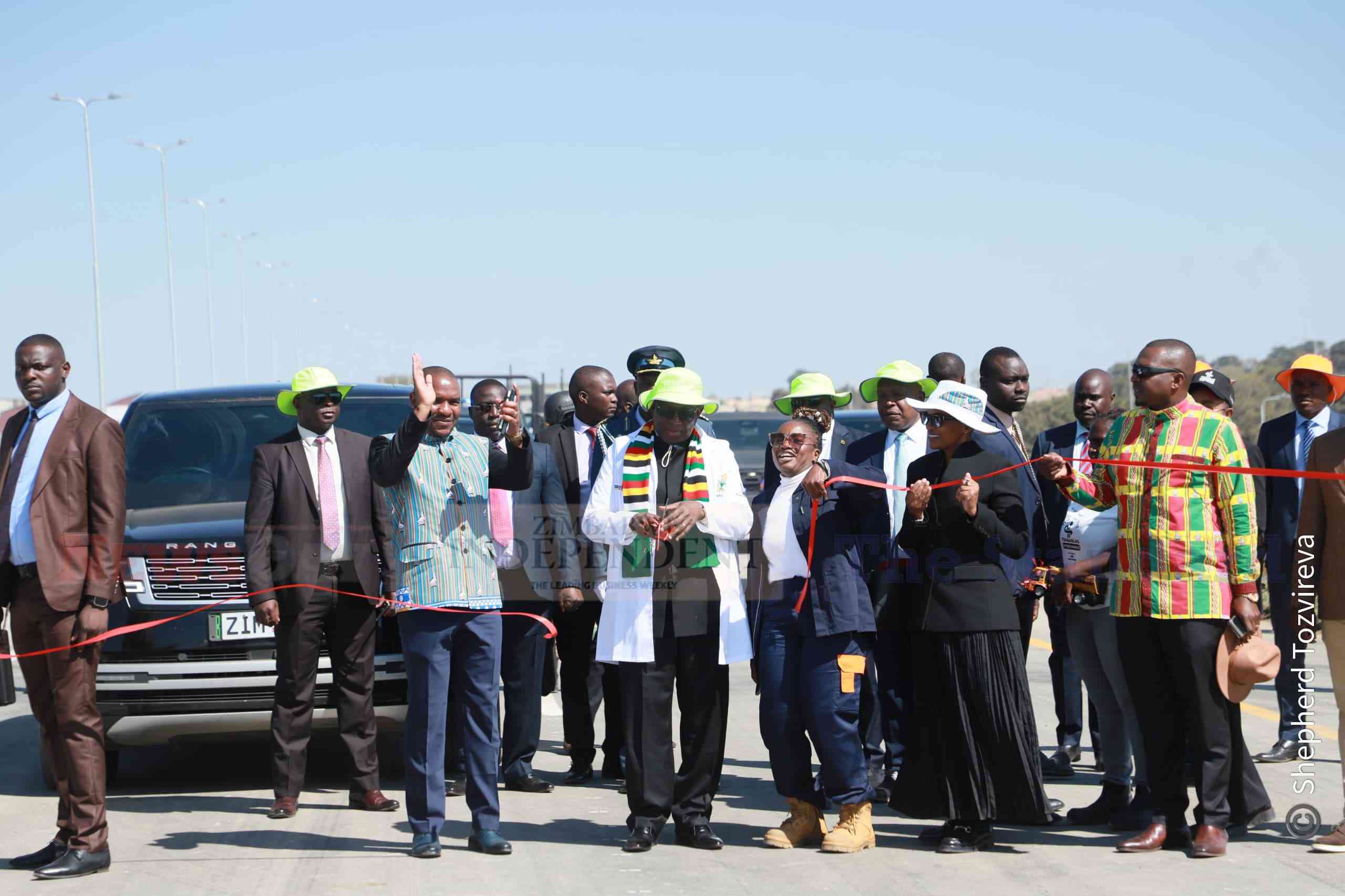
LAST Friday, President Emmerson Mnangagwa officially opened the Trabablas Interchange, formerly known as Mbudzi Roundabout.
The landmark interchange connects three major roads — Simon Mazorodze, High Glen and Chitungwiza — and involved the construction of 15 major bridges and 18 structures, some rising as high as 18 metres from the ground.
Thirteen of these structures are directly on the interchange, while two are on Amalinda Road and Harare Drive.
For years, commuters and motorists lamented the traffic chaos that plagued this area.
Travellers spent hours on end in the morning or evening rush hour trying to get to the other side of the traffic circle.
Today, Mnangagwa has achieved a feat many never dreamed possible. Whoever is advising him on such impressive and massive projects is doing a fantastic job. We cannot take that away from them.
Kudos to the team behind the scenes.
According to reports, preparatory work has begun for the construction of two interchanges — at the junctions of Simon Mazorodze and Willowvale roads, and Simon Mazorodze Road and Remembrance Drive — amid revelations that four more such structures are planned to ease congestion, reduce road carnage and modernise the country’s infrastructure.
- Mr President, you missed the opportunity to be the veritable voice of conscience
- ED to commission new-look border post
- Zanu PF ready for congress
- EU slams Zim over delayed reforms
Keep Reading
The upcoming interchanges are expected at Mabvuku junction; Harare Drive-Mutare Road; Harare Drive-Liberation Legacy Way (formerly Borrowdale Road); Nemakonde Way-Harare Drive; Sam Nujoma-Harare Drive; Westgate Traffic Circle; Kuwadzana Traffic Circle; and Churchill/Liberation Legacy Way.
However, serious concerns have been raised about the actual constructing cost of the Trabablas Interchange, detours and compensation paid to those who lost their land.
The government insists the whole project cost a total of US$88 million — a figure widely believed to be inflated and excessively high compared to similar or even larger infrastructural projects.
For comparison, China — the world’s second-largest economy by nominal GDP — constructed the Beipanjiang Bridge, once recognised as the world’s highest bridge, at a cost of approximately US$144 million.
Construction started in 2012 and the bridge opened to traffic on December 29, 2016.
Stretching over 1 341 metres in length, with a main span of 720 metres, the Beipanjiang Bridge ranks as the second-longest steel truss girder cable-stayed bridge globally.
It showcases an impressive blend of steel and concrete, with advanced cable support technology ensuring stability across the deep valley it spans.
Then there is the Huajiang Grand Canyon Bridge — the current record holder — reportedly built at a cost of US$216 million.
This means the cost of constructing the three mound-supported Trabablas interchanges could fund a single Huajiang Grand Canyon Bridge — and leave change. Imagine the vastly different worlds of technology employed.
In fact, some now say the Trabablas Interchange was originally estimated to cost US$42 million, a figure that included compensation for affected landowners.
And this amount was inflated to US$88 million — more than double the original estimate.
Now that the Trabablas Interchange has set this expensive precedent, there is little hope that the planned interchanges will cost any less.
This blatant tendency to inflate figures in Zimbabwe is part of a deeply ingrained culture of corruption that is refusing to die.
Consider the crooked bridge commissioned in April in Somgolo, Lupane East, by Matabeleland North Provincial Affairs and Devolution minister Richard Moyo, which reportedly cost US$950 000.
Then there is the 23-metre Pembi Bridge in Mvurwi, opened by the Vice-President in July 2020, said to have cost US$1,8 million.
Zimbabwe is being looted dry by the ruling regime.
By the time Zimbabweans wake up to this harsh reality, there may be nothing left to salvage.
This is wrong.
We cannot allow people to continue milking the country dry — corrupting public projects, siphoning funds and stealing from the people they are supposed to serve.






